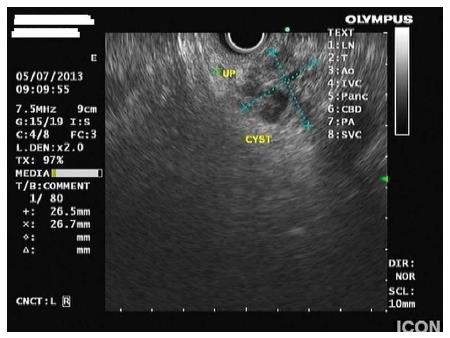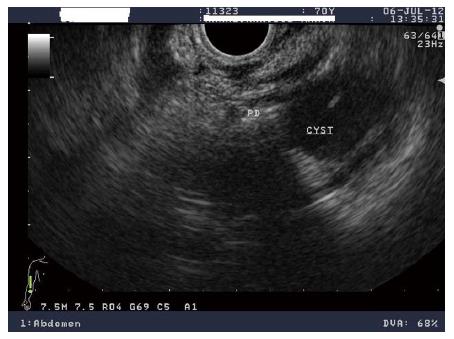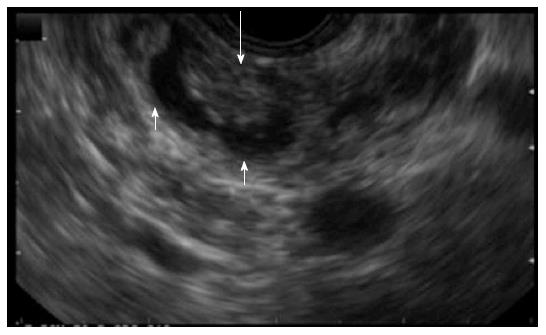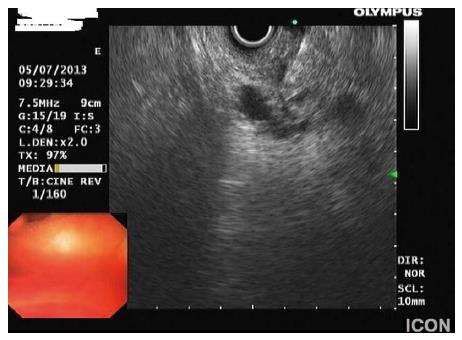Copyright
©2014 Baishideng Publishing Group Inc.
World J Gastroenterol. Jun 28, 2014; 20(24): 7785-7793
Published online Jun 28, 2014. doi: 10.3748/wjg.v20.i24.7785
Published online Jun 28, 2014. doi: 10.3748/wjg.v20.i24.7785
Figure 1 Multilocular branch-duct intraductal papillary mucinous neoplasms in the uncinate process of the pancreas (communication with the pancreatic duct is just visible).
Figure 2 Branch-duct intraductal papillary mucinous neoplasms communicating with a non-dilated pancreatic duct.
Figure 3 Main-duct - intraductal papillary mucinous neoplasms with a mural nodule.
This figure shows a dilated main pancreatic duct (short arrow), with a mural nodule within the duct (long arrow). This patient was found to have a main-duct - intraductal papillary mucinous neoplasms with an invasive adenocarcinoma.
Figure 4 Fine-needle aspiration of a branch-duct intraductal papillary mucinous neoplasms.
Material obtained was mucinous (Papanikolaou staining) with low cellularity. Mucinous cells did not demonstrate nuclear atypia and expressed MUC5AC, but not MUC1 or MUC2 on immunostaining, findings consistent with a benign branch-duct intraductal papillary mucinous neoplasms.
- Citation: Efthymiou A, Podas T, Zacharakis E. Endoscopic ultrasound in the diagnosis of pancreatic intraductal papillary mucinous neoplasms. World J Gastroenterol 2014; 20(24): 7785-7793
- URL: https://www.wjgnet.com/1007-9327/full/v20/i24/7785.htm
- DOI: https://dx.doi.org/10.3748/wjg.v20.i24.7785












